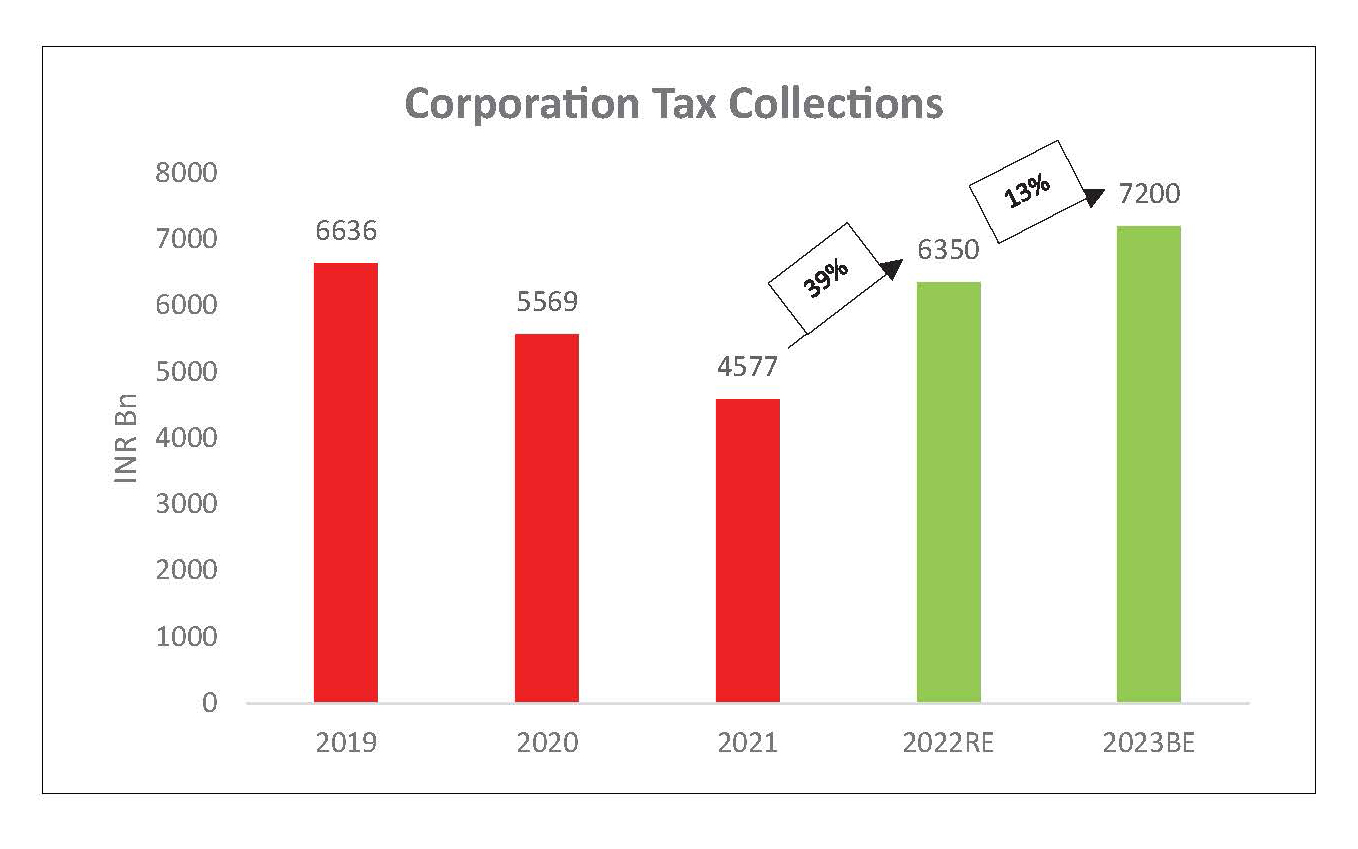
Macro and
Equity Market
Outlook
Equity Market
Outlook
Global Macro & Markets
2022 started on a volatile note as the US Fed
signaled faster tightening of monetary policy. US
10Y interest rates rose 27 bps while the Dollar index
strengthened 0.9% over the month. MSCI World
was down 5.3%, in line with the fall in S&P 500
(-5.3%). Euro-50 and Japanese Nikkei lost 2.9% and
6.2% respectively. NASDAQ composite, however, fell
almost 9% over the month as Tech stocks globally
stood to be the biggest losers of the Fed’s faster
than expected rate hikes. MSCI EM was down 1.9%.
BOVESPA Brazil rebounded to gain 7% while MOEX
Russia lost 6.8% MoM. India’s NIFTY (-0.1%)
remained flat MoM. LME Metals index stayed
resilient with 1.9%m/m gains. Brent Crude, standing
the single largest beneficiary of the geopolitical
tensions between Russia and Ukraine, gained
17.3%m/m.
Domestic Macro & Markets
Sensex rose about 5% by January 17, only to give it all back during
the rest of the month. Broader market marginally underperformed
over the month. BSE Midcap index and BSE Smallcap index were
both down 1.4% and 0.8% respectively. Among sector indices,
Utilities (+14%), Financials (+3%) and Discretionary (+3%)
outperformed the index while IT (-9%), HealthCare (-8%) and
Staples (-5%) lagged the most. Market breadth improved in
January with 54% of BSE 200 stocks trading above their respective
200-day moving averages. FPIs sold US$3.8 bn of Indian equities in
the secondary market while DIIs bought US$2.5 bn.

India's high frequency data update:
Positive momentum in GST collections, manufacturing activity and
exports bode well for near term economic rebound after mild
disruption caused by the rapid spread of the Omicron variant.
Manufacturing PMI:
Manufacturing PMI continued to remain expansionary at 54 in
January'22, albeit slowly compared to 55.5 in December'21.
GST Collection:
With collections at INR 1.41 Tn (+15% YoY) in January'22, the
Government recorded highest ever collections since the inception
of the GST in July 2017.
Power consumption:
Power consumption in the month of January'22 was 1.1% higher
than January'21 and 5.9% higher than the consumption in
January'20.
Core sector production:
Core sector production rose 3.8% YoY in December'21 as against a
YoY rise of 3.4% in November'21 and rise of 0.4% in December last
year.
Industrial Production:
Manufacturing IIP rose 0.9% in November'21 vs dip of 1.6% in
November last year.
Credit growth:
Credit growth inched up to 8% YoY as of 14-Jan'22 against YoY
growth of 6.4% as observed on 15-Jan 2021. Aggregate deposit
growth remained flat at 9.3% YoY.
Inflation:
CPI inflation in December'21 shot up to 5.59% from 4.91% on the back
of elevated fuel and light inflation (+11%) and core inflation (+6.2%).
WPI inflation moderated to 13.6%.
Trade Deficit:
December'21 trade deficit came at US$22 bn as compared to
US$22.9 bn in November'21. Exports increased 37% YoY to US$37.3 bn
while imports increased by 38% YoY to $59.3 bn.
Balance of Payments (BOP):
The current account registered a deficit of US$9.6 bn (1.3% of GDP)
in 2QFY22 against a surplus of US$6.5 bn in 1QFY22 (0.9% of GDP)
and surplus of US$15.3 bn (2.4% of GDP) in 2QFY21. The deficit was led
by a widening of the trade deficit to US$44.4 bn (1QFY22: US$30.7
bn) and an increase in net investment income outflow of US$10 bn
(US$7 bn in 1QFY22).
Union Budget:
The budget maintained a pro-growth bias with transparent and
credible set of assumptions for tax revenue growth as well as
expenditure plans. Capital expenditure growth is pegged at
24.5%yoy in FY23, which will take central govt’s capex-to-GDP to an
18 year high of 2.9%. From extension of credit guarantee scheme for
SMEs and MSMEs to touching upon battery swap policy for EVs and
incentivizing solar cell manufacturing in India, focus has been on
an all-inclusive secular growth of the economy. Fiscal
consolidation along with improvement in quality of spending were
key highlights of the Union budget.
Market View
Domestic economic recovery is likely to be in line with expectations
supported by:
- Robust government capital spending, nascent signs of private corporate capex recovery, and revival in housing investment
- Strong Urban discretionary Consumption driven by pent up demand
- Healthy Exports
We believe broad based recovery in the markets will continue (with
volatility) as the economy revives and earnings growth is expected
to sustain on continued macro recovery. Technology, China+1 and
Domestic recovery/outdoor consumption may be key themes
dominating the market. Major risks to our view are higher Inflation,
Oil price, New virus variants.
We believe all three market cap segments (Large, Mid and Small)
offer similar risk reward, making a case for diversified strategies with
investments across market caps. Conservative investors seeking
equity exposure with lower volatility may consider asset allocation
strategies like Balanced Advantage etc which manage equity
allocations dynamically.
Note: The sectors mentioned are not a recommendation to buy/sell in the
said sectors. The schemes may or may not have future
position in the said sectors. For complete details on Holdings & Sectors of NIMF
schemes, please visit website mf.nipponindiaim.com;
Past performance may or may not be sustained in future
Past performance may or may not be sustained in future
Chart of the month :
Rise in corporate tax collection by 39% and 13% in FY22 and FY23
basis budget estimates is indicative of sustained rise in Corporate
Profits to GDP ratio for India.

Common Source:
Budget Documents, Nippon India Mutual Fund Research,
Bloomberg
Disclaimer:The views expressed herein are based on publicly available
information and other sources believed to be
reliable. It is issued for information purposes only and is not an offer to sell or a
solicitation to buy/sell any mutual fund
units/securities. It should be noted that the analysis, opinions, views expressed in the
document are based on the Budget
proposals presented by the Honourable Finance Minister in the Parliament on Feb 1, 2022
and the said Budget proposals
may change or may be different at the time the Budget is passed by the Parliament and
notified by the Government. The
information contained in this document is for general purposes only and not a complete
disclosure of every material fact
of Indian Budget. For a detailed study, please refer to the budget documents available
on http://www.indiabudget.gov.in
The information herein above is meant only for general reading purposes and the views
being expressed only constitute
opinions and therefore cannot be considered as guidelines, recommendations or as a
professional guide for the readers.
The document has been prepared on the basis of publicly available information,
internally developed data and other
sources believed to be reliable. The sponsors, the Investment Manager, the Trustee or
any of their directors, employees,
Associates or representatives (‘entities & their Associate”) do not assume any
responsibility for, or warrant the accuracy,
completeness, adequacy and reliability of such information. Recipients of this
information are advised to rely on their own
analysis, interpretations & investigations. Readers are also advised to seek independent
professional advice in order to
arrive at an informed investment decision. Entities & their associates including persons
involved in the preparation or
issuance of this material, shall not be liable in any way for any direct, indirect,
special, incidental, consequential, punitive or
exemplary damages, including on account of lost profits arising from the information
contained in this material. Recipient
alone shall be fully responsible for any decision taken on the basis of this
document.
